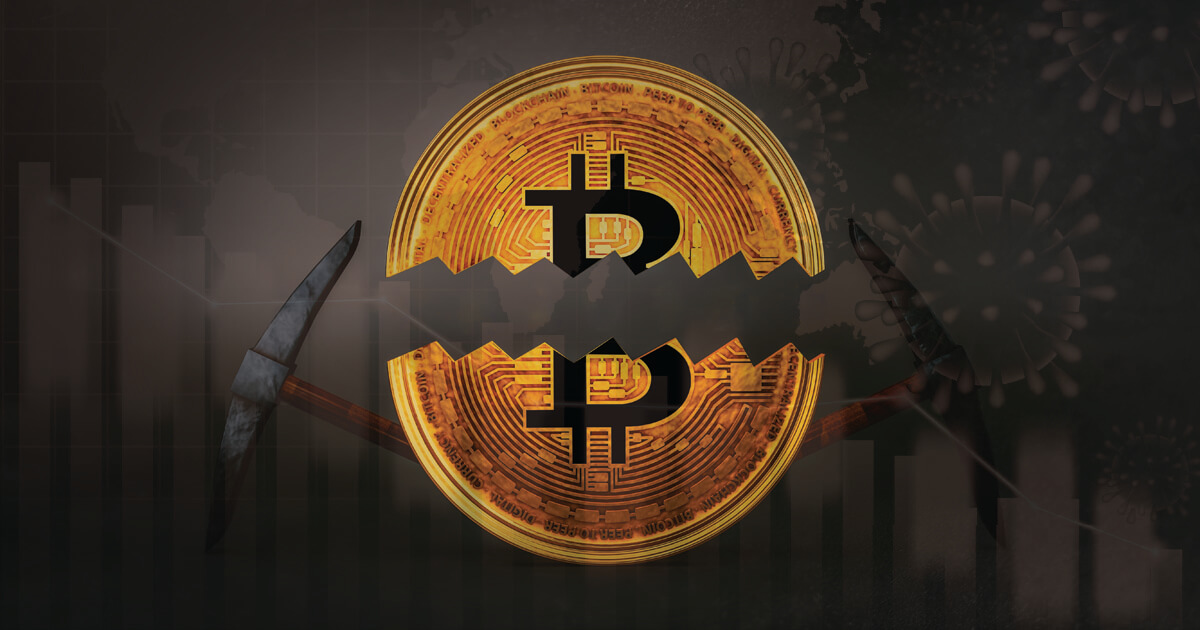Can We Expect a Bitcoin Bull Run Amid the Upcoming Bitcoin Halving and Coronavirus Pandemic?

The next Bitcoin halving is expected to take place in May 2020. Each time Bitcoin halving takes place, the number of Bitcoins entering circulation every 10 minutes, also known as block rewards, will fall to half, to 6.25 from 12.5 in May. As the amount of supply of the crypto is decreasing, the demand most likely will stay the same, but possibly lead to an increase in Bitcoin’s price. Experts believe that there will be less Bitcoin available in the market if the miners will be selling less of the cryptocurrency.
Around every four years, and in precisely 210,000 blocks, the total number of Bitcoin that miners are rewarded with is halved. Blocks are produced by miners who use extensive electronic equipment to earn and mine Bitcoin. The process is expected to end with a total of 21 million Bitcoins, predicted in the year 2140.
Bitcoin differs from most state-issued currencies such as the US Federal Reserve, which uses securities as a tool to enable to addition or removal of dollars from its circulation if the economy is under duress. The supply schedule for Bitcoin has been locked in from the beginning, and Bitcoin’s monetary policy has been written into code and distributed through the network. With its fixed supply and predictable inflation schedule, its predetermined number enables Bitcoins to be made scarce, although its utility will ultimately depend on its market value.
What can we expect from the coronavirus pandemic-induced market crash?
Central banks and governments around the world have released trillions of dollars in aid to combat the economic impacts of the coronavirus into the financial system.
Some experts believe that the COVID-19 market crash has reduced the risk of a halving price dump and could lead to a Bitcoin bull run. Chainalysis hosted an online panel with a group of industry experts to discuss the possible impacts of the coronavirus pandemic on Bitcoin and what lies ahead.
Head of Research at CoinShares, Chris Bendikson, believes that Bitcoin’s price crash in March acted as preparation for miners in light of the Bitcoin halving event. With the price crash, the sudden impact on profitability would be reduced. However, the periodic decrease in mining rewards will eventually become an issue, as miners need to get paid to run those electronic equipment to be able to mine cryptocurrency. Satoshi Nakamoto, the pseudonymous person or persons who developed Bitcoin, wrote, “In a few decades when the reward gets too small, the transaction fee will become the main compensation for nodes. I’m sure that in 20 years, there will be either be very large transaction volume or no volume.”
Bitcoin Cash and BSV halving considered to be a non-event
Bitcoin Cash, the cryptocurrency that forked from the Bitcoin blockchain in 2017, had its first programmable halving on April 8. Bitcoin Cash’s rewards were halved, which had a tremendous impact on miners’ gross revenues, as the mining difficulty and hash rate were already on a downward trend up to the halving.
Roger Ver previously said, “The last two times, basically nothing happened at all. It was a non-event; it wasn’t exciting at all, and that’s my prediction for what’s going to happen this time as well. Bitcoin SV’s halving is expected this Friday, April 10.

